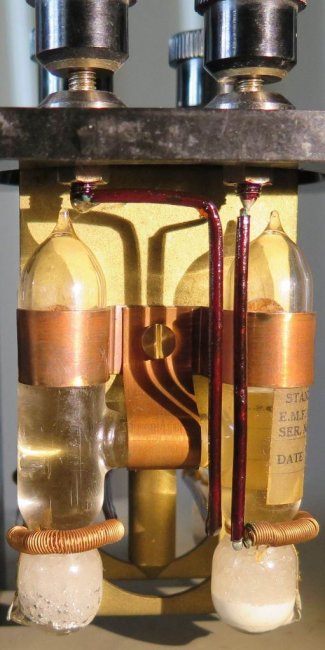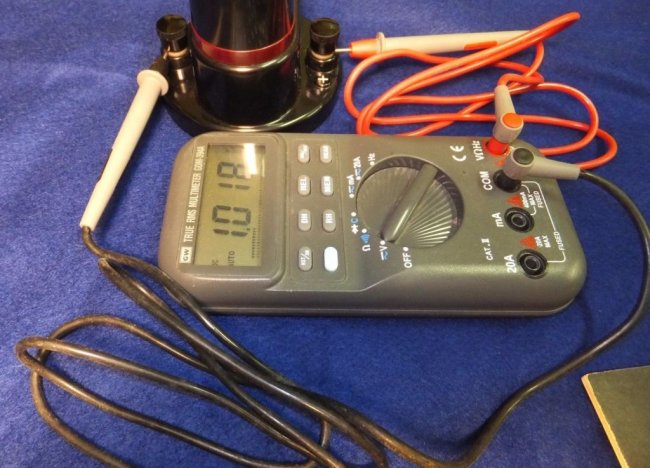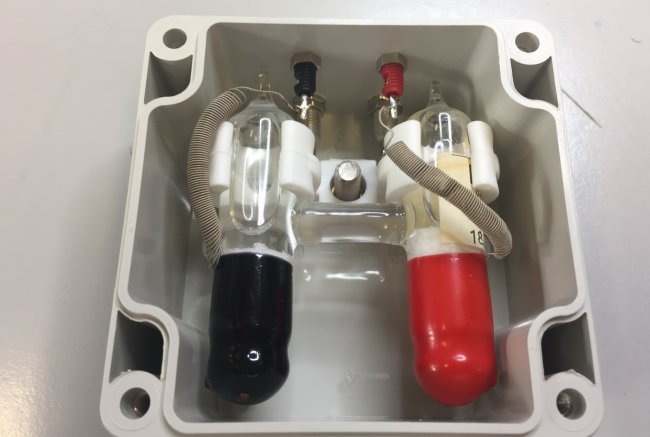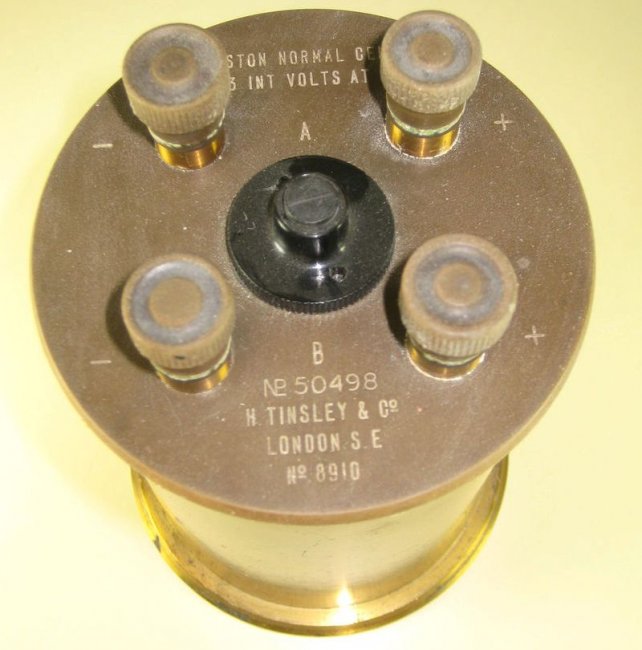Weston's Normal Element — Stress Standard and Stress Reference in Metrology
The main and only kind sample EMF measures currently, they are normal elements, saturated and unsaturated (so-called cadmium).
The most common "normal" items are:
-
Weston's mercury-cadmium element;
-
mercury-zinc amalgam Clark element;
-
Rutin zinc normal element.
The first normal saturated element was created by the American chemist Edward Weston (1850 — 1936). In 1908 these elements were adopted for use in metrological purposes.
A normal saturated cell consists of an H-shaped glass shell filled with certain substances inside, sealed at the upper ends, and with platinum wires soldered to the bottom of each of its branch electrodes.
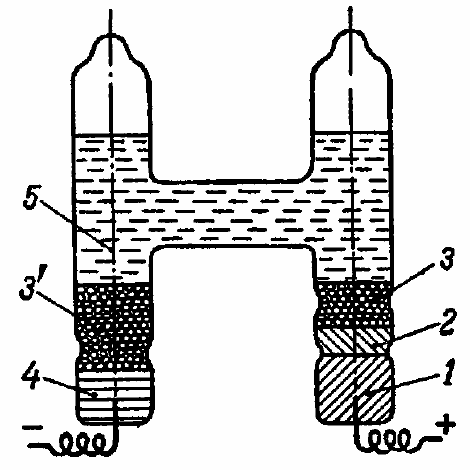
Diagram of normal elements by Edward Weston
The "positive" branch, which has two constrictions in its lower part, has the following filling: 1 — mercury (up to the first constriction); 2 — depolarizing paste consisting of a mixture of crushed crystals of cadmium sulfate CdSO4 8/332O and mercury sulfate Hg2SC4; 3 — crystals of cadmium sulfate.
"Negative" branch has a filling: 4 - cadmium amalgam (12% cadmium, 88% mercury) and 3 ' - crystals of cadmium sulfate, as in the positive branch.
The middle parts of the two branches are filled with a saturated aqueous solution of cadmium sulfate - 5.
The narrowings made in the lower parts of the two branches of the vessel serve to prevent the mixing of the constituent parts of the filling of the element in case of its shaking.
With strict observance of the established production technology, it is possible to obtain normal (saturated) elements with a high degree of uniformity in terms of their measurement properties.
The EMF values of normal Weston elements fit within very narrow limits — from about 1.0185 V to 1.0187 V at an element temperature equal to + 20 ° C, i.e. the discrepancy in the EMF of individual elements does not exceed 200 μV.
A very important property of normal Weston cells is the high stability of the EMF value of each individual cell under proper conditions of storage and use. The EMF value of a normal element can remain unchanged for many years with an accuracy of a few tens of microvolts.
The EMF value of a normal element is quite strong, but it naturally depends on the temperature.
Normal saturated elements have an internal resistance of 500 — 1000 Ohm and under no circumstances should be loaded with a current greater than 1 μA, otherwise the value of their EMF may become unstable.
It is impossible, for example, to measure the EMF of a normal element using a voltmeter, since the latter would have to have an internal resistance of at least a few megohms. When you plug in a voltmeter with a lower resistance, the normal element will fail.
Unsaturated normal elements in their structure differ from saturated mainly only in that at temperatures above + 4 ° C the cadmium sulfate solution in them is unsaturated, free crystals are absent.
Also, since the unsaturated elements are intended mainly for portable meters, thin corks are inserted into the interior of the glass cases near the surfaces of the cadmium amalgam in one branch and the depolarizing paste in the other branch. Due to their porosity, these plugs do not impede the electrolytic processes in the cell and at the same time prevent the mixing of the cell's components, even when the cell is inverted.
Unsaturated elements differ from saturated elements by their measuring qualities:
-
significantly lower temperature dependence of EMF, only 2 — 3 μV per 1 ° C, i.e. 15 — 20 times less than that of saturated elements, which is their main advantage;
-
slightly higher value of EMF: 1.0185 — 1.0195 V at 20 ° C and lower internal resistance;
-
much lower stability of EMF, especially in the conditions of their regular use;
-
higher permissible current load — up to 10 μA — due to the lower requirements for the accuracy of reproduction of the EMF value.
According to GOST, saturated elements are produced in two classes — I and II, unsaturated elements are produced as class III elements.
Class I elements should be enclosed in metal perforated casings and allowed to be immersed in baths filled with dry transformer oil to equalize the temperature of the element branches.
Class II items must be enclosed in wooden or plastic casings and allow the temperature inside the casing to be measured with a thermometer.
Class III unsaturated elements shall be enclosed in plastic or metal casings of special shape, with a special arrangement of clamp-screws adapted to mount these elements in portable or stationary measuring instruments and instruments.
In addition to the above precautions required when using normal Class I and II elements, a number of other conditions must be observed; do not move them from place to place and do not subject them to impact, roll over, do not use them sooner than a few days after their transport or after sudden temperature fluctuations.
During operation, Weston normal elements must be especially protected from uneven heating or cooling of their branches - under the influence of sunlight, nearby heaters or cold windows in winter.

